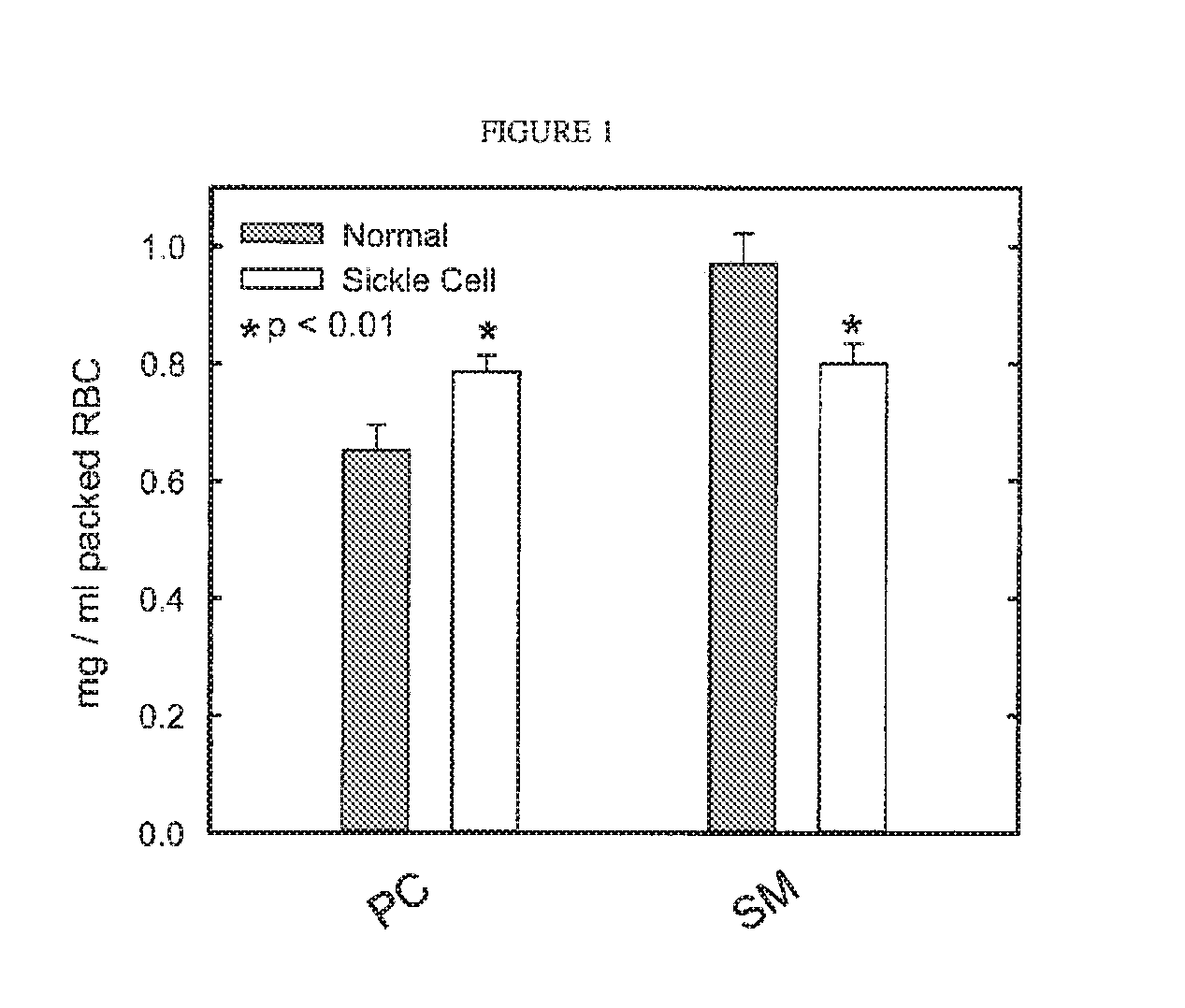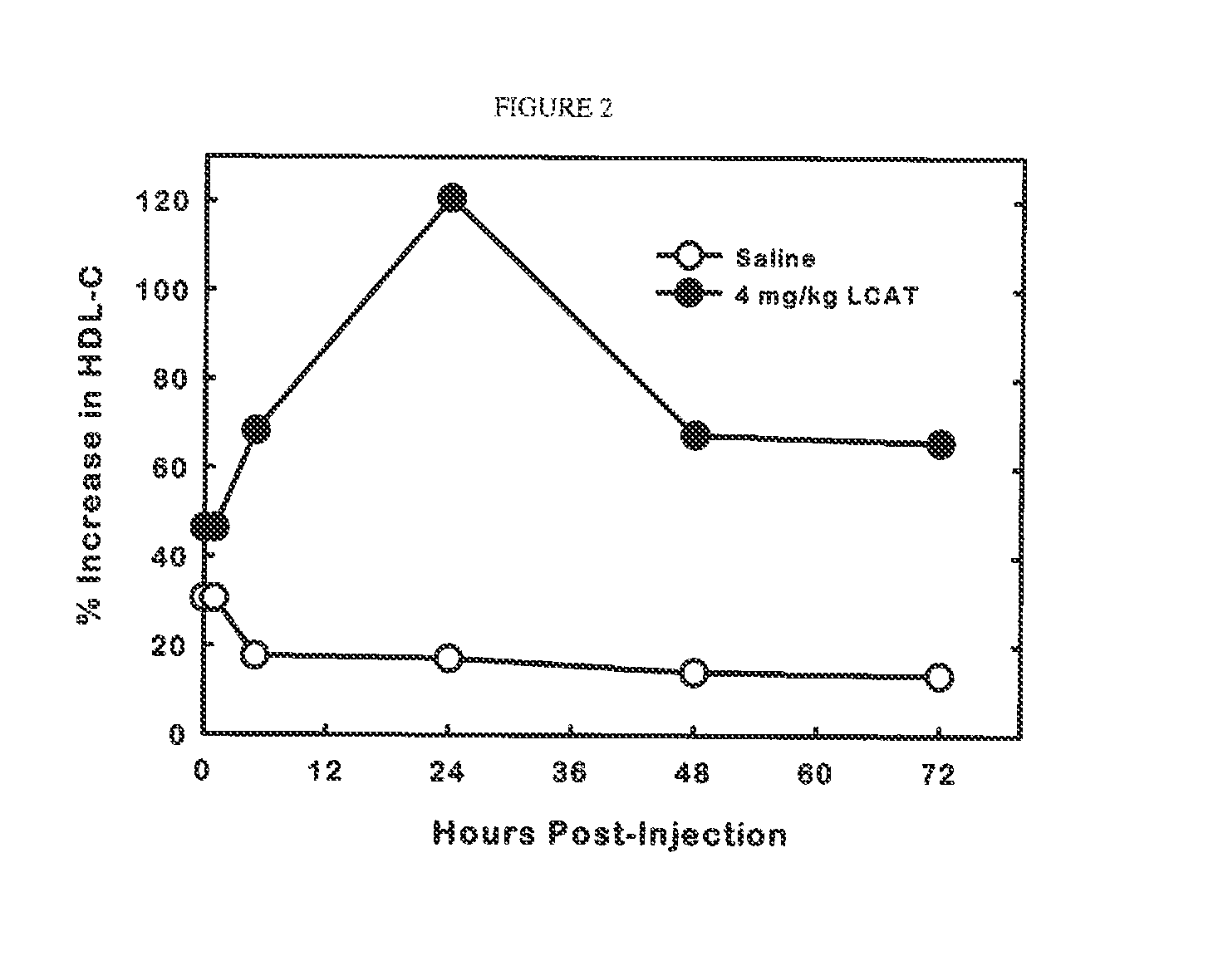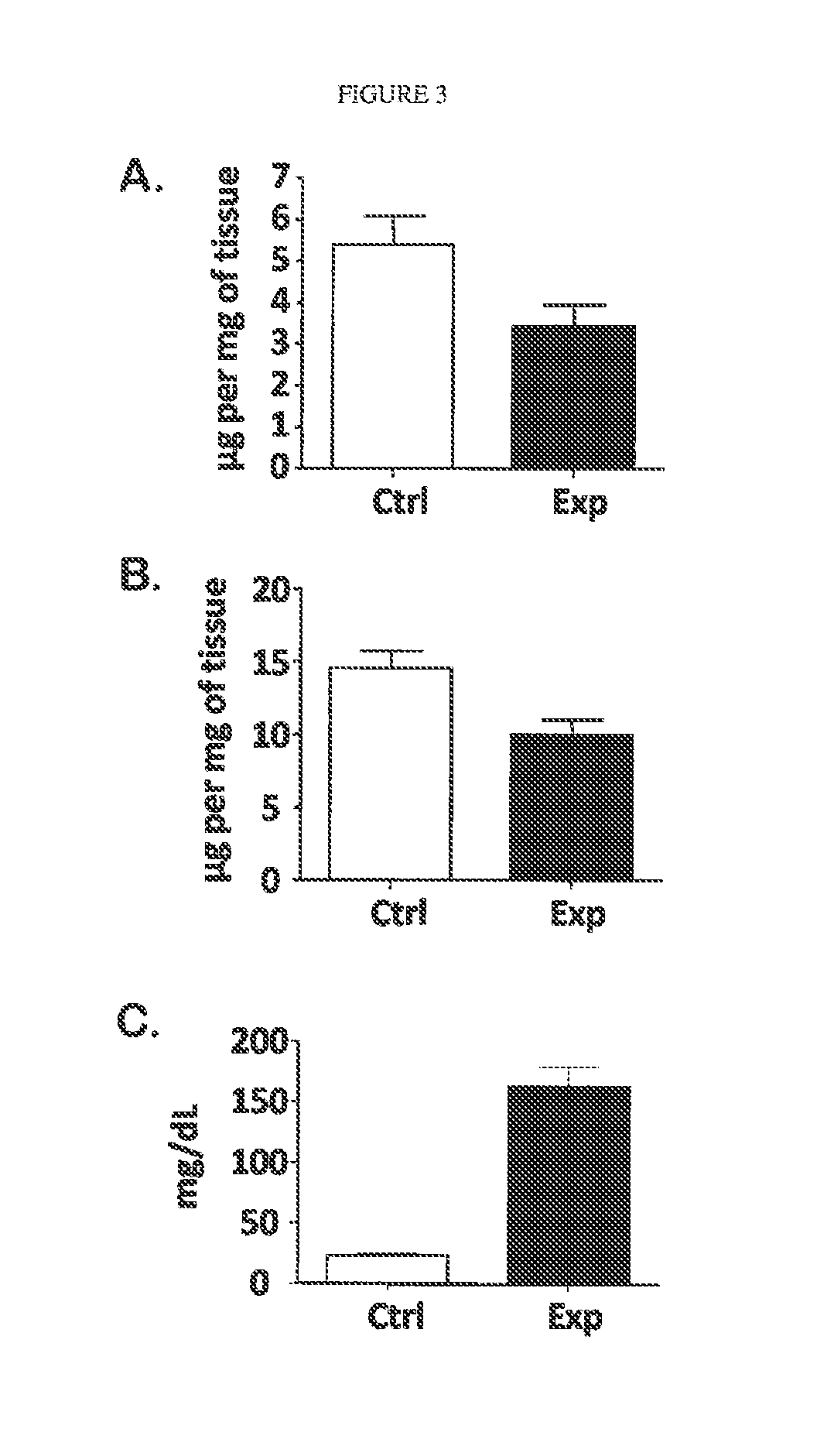Use of LCAT for Treating Anemia and Red Blood Cell Dysfunction
a technology of red blood cell dysfunction and anemia, applied in the field of medicine, can solve the problems of increased morbidity and mortality, reduced vision, eventual kidney failure, etc., and achieve the effects of increasing hematocrit, reducing morbidity and mortality, and positive relationship between lcat levels and hematocri
- Summary
- Abstract
- Description
- Claims
- Application Information
AI Technical Summary
Benefits of technology
Problems solved by technology
Method used
Image
Examples
example 1
Effect of LCAT Level on Hematocrit in Mice
[0072]Blood was sampled from 3 groups of mice: LCAT deficient (LCAT-KO), LCAT over-expressing transgenic (˜30× normal LCAT activity), and control C57 / b6 mice. RBC membranes were isolated from the blood sample, and choline containing phospholipids were measured (Wako Phospholipids B, Richmond) as a surrogate for RBC mass or hematocrit. RBC mass was significantly lower in the LCAT deficient mice as compared to normal mice (402±22.0 μg / ml whole blood vs. 486±25.7 μml whole blood, respectively). The anemia in the LCAT deficient mice demonstrated here is similar to the extent of anemia observed in FLD patients. Surprisingly RBC mass was significantly elevated in LCAT over-expressing transgenic mice as compared to mice with normal LCAT activity (556±20.1 μg / ml whole blood vs. 486±25.7 μg / ml whole blood, respectively). These results show that there is a positive relationship between LCAT levels and hematocrit. Additionally, and most importantly, su...
example 3
Preparation of Recombinant Human Lcat
[0074]The plasmid pCMV6-XL4 / LCAT encoding human LCAT protein was purchased from Origene Technologies (Rockville, Md.) and ligated into pcDNA3.1 / Hygro (Invitrogen, Carlsbad, Calif.). The pcDNA3.1 vector was transfected into HEK293f cells. Stably-transfected cells were selected with 200 μg / ml hygromycin B and grown in Freestyle 293 serum-free medium (Invitrogen) in 10 L shake flasks for 4 days. The rhLCAT was isolated from the culture medium by precipitation with zinc chloride followed by batch capture and elution with phenylsepharose.
example 4
HDL Cholesterol Increase in Human Apolipoprotein A-I Transgenic Mice Injected with LCAT
[0075]Male transgenic mice expressing the human apolipoprotein A-I gene (Jackson Laboratory) were maintained on a normal chow diet, ad libitum. The mice were given a single intravenous injection of saline or recombinant human LCAT in saline (4 mg / kg) via the retro-orbital sinus. Blood was collected at the orbital plexus in isoflurane-anaesthetized animals at 0, 1, 4, 24, 48 and 72 hours post-injection. Plasma cholesterol concentration was determined with commercial enzymatic assay kits. The amount of cholesterol in HDL (HDL-C) was determined by agarose gel electrophoresis with the SPIFE system from Helena Labs. FIG. 2 shows that the mice that were administered LCAT showed a significant increase in the levels of plasma HDL-C by as much as 120% of control. The HDL-C level remained at increased levels for the duration of the experiment (72 hours). The rise in plasma HDL was surprisingly rapid showing...
PUM
| Property | Measurement | Unit |
|---|---|---|
| weight | aaaaa | aaaaa |
| concentration | aaaaa | aaaaa |
| microvascular disorder | aaaaa | aaaaa |
Abstract
Description
Claims
Application Information
 Login to View More
Login to View More - R&D
- Intellectual Property
- Life Sciences
- Materials
- Tech Scout
- Unparalleled Data Quality
- Higher Quality Content
- 60% Fewer Hallucinations
Browse by: Latest US Patents, China's latest patents, Technical Efficacy Thesaurus, Application Domain, Technology Topic, Popular Technical Reports.
© 2025 PatSnap. All rights reserved.Legal|Privacy policy|Modern Slavery Act Transparency Statement|Sitemap|About US| Contact US: help@patsnap.com



